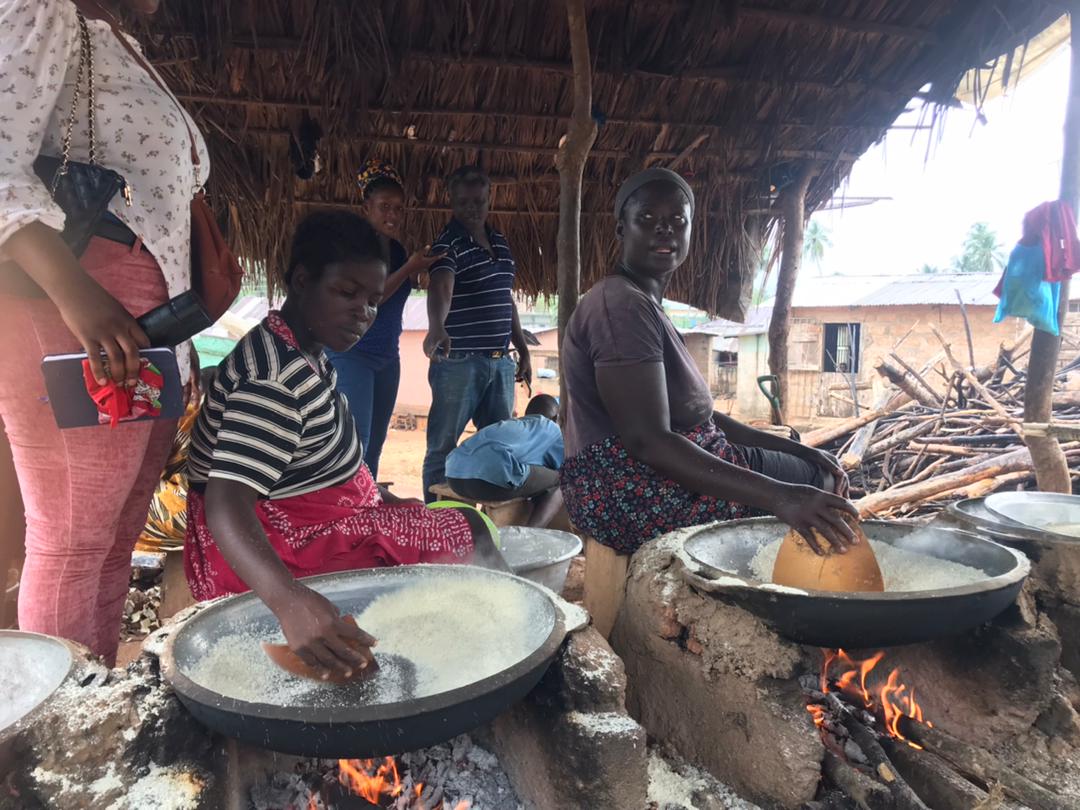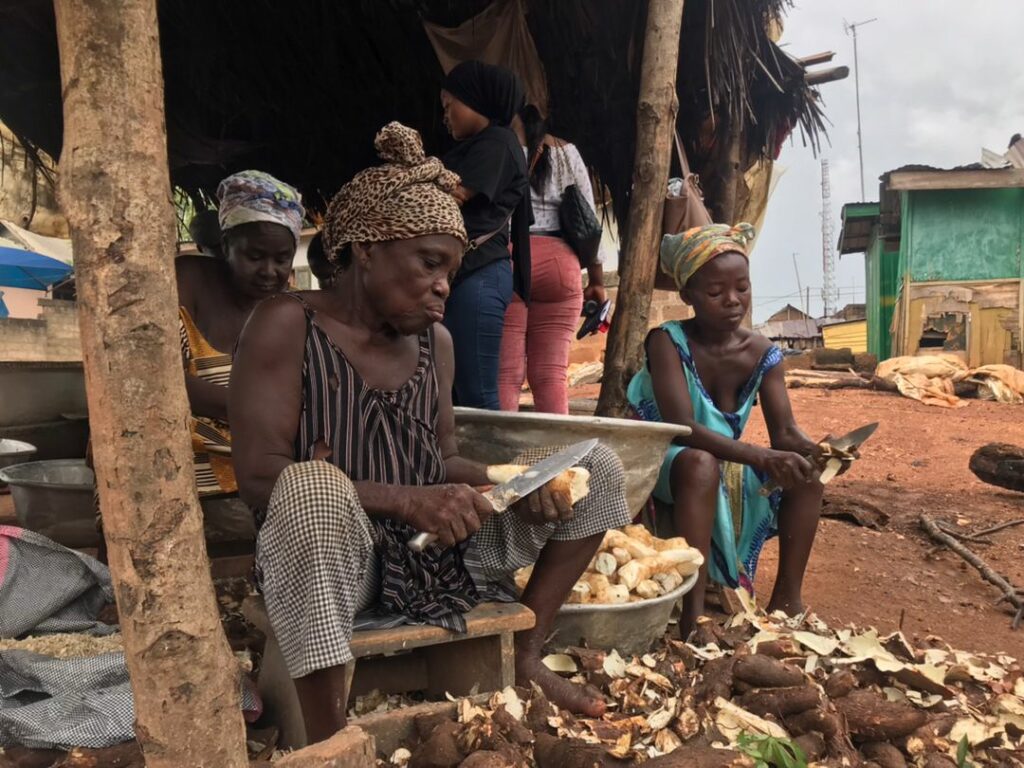Gari – Processing, the Pillar of Bawjiase Residents.

Do you Know Gari locally is the most commercial cassava product in West Africa, especially in some regions in Ghana which serve as a pillar for indigenes to employ themselves? Gari demands no educational certificate before applying to join the team, it only needs dedication, constituency, practical skills learned from the settlers of Bawjiase, and land for cultivation.
All these are needed to check demand and supply as Ghana’s Gari processing continues to increase in production as a result of increasing urban demand and export.
Traveling to the Central Region of Ghana, cassava and gari processing has been one of the most popular jobs as well as widely consumed food crops in ” Bawjiase”.

Bawjiase is a community located in the central region of Ghana. Its residents are known for high-quality Gari and black soap ( Alata Samina) as a primary source of living.
Residents make their gari under sheds in their various homes. They usually start their gari process as early as 5:00 am to start the day’s activities which usually end late evening.
Recently a community of Journalist students of the Ghana Institute of Journalism visited the area to interact with the processors of Gari.
As the tongue of gari consumers never lies about how delicious gari tastes likewise it’s multi-used by different people including the rich and the poor.
When it comes to gari, the rich and poor come to the same level of satisfaction since its method of production is easy to learn without gaining a certificate or professional chef to teach its students.
Central to that, the method of production basically starts from uprooting the cassava from the farms and transporting it to the house.
*Peeling of the cassava skin and chopping the tubers into smaller pieces is done in a big – large basin.
- Wash the peeled tubers with water and grind the pieces with a cassava mill.
- Pack the pulp in baskets made of cane or palm branches as well as give the pulp 1 – 2 days to complete the fermentation process.
- Now transfer the pulp into a porous bag which is then placed on an adjustable press machine for 1 to 5 hours to remove excess water.
- Further, apply the 4 stages human process, and sieve the uncooked gari to separate Chaffey after removing excess water.
- After this is the frying process which requires continuous stirring to ensure the gari doesn’t get burnt. This stage is carefully done by three people who transfer their fries to each other’s pans until it is well cooked.
In admiration of this natural process of gari making, many residents get to employ 4 to 8 workers in a job role. These workers develop the skills and later establish themselves in the processing field.
In accordance with many homes, processing Gari at Bawjiase has become their favorite food to the extent that the majority of them can never do away in a day without eating Gari with beans or sokins( thus gari, sugar, and groundnut).
As stated by the Assemblyman for Bawjiase, he expresses how gari has in a way calmed the hunger in the community.
” Because it the common food prepared by residents, we have no option than to choose gari over assorted fried rice which many cannot afford to buy”
In addition, Mr. Agyemang encouraged the youth of Bawjiase to learn from what the community has.
















